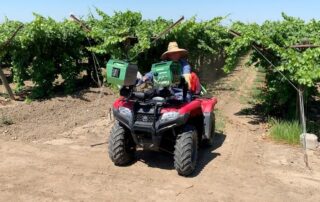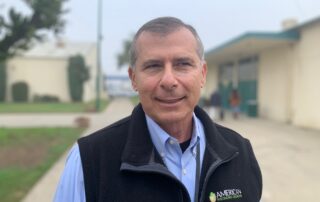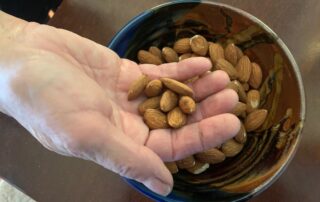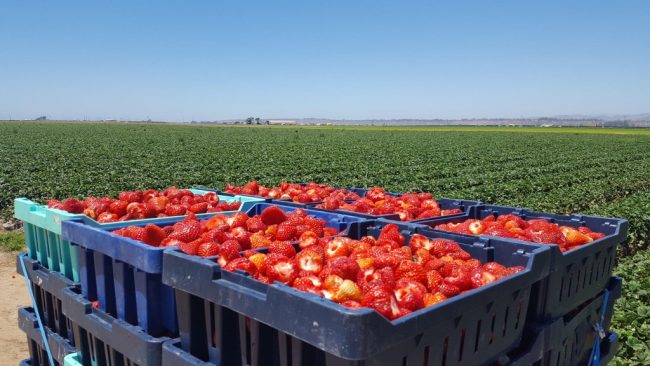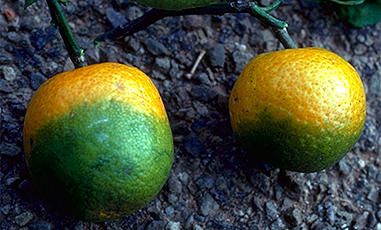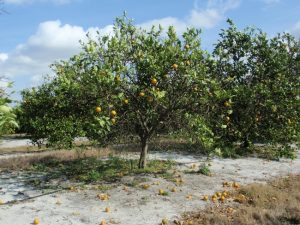UC Scientists Receive Big Climate-Smart Grant
UC ANR Scientists Receive $1.5M NIFA Grant For Climate-Smart Agriculture
By Pam Kan-Rice, UCANR Assistant Director, News and Information Outreach
To help California farmers and ranchers adjust to uncertain weather and climate events, the USDA National Institute for Food and Agriculture has awarded $1.5 million to a team of scientists led by UC Agriculture and Natural Resources. The project is one of six projects funded by USDA NIFA’s $9 million investment to expand adoption of climate-smart practices.
“The Cooperative Extension system and the USDA Climate Hubs have unmatched capacity to reach agricultural, Tribal and underserved communities, as well as educators and students, and our nation’s farmers directly,” said Agriculture Secretary Tom Vilsack in a statement announcing the grant recipients. “This partnership will strengthen climate research efforts and accelerate the development, adoption and application of science-based, climate-smart practices that benefit everyone.”
California has the largest and the most diverse agricultural economy in the nation, with revenue exceeding $50 billion, which is larger than the revenues of the other 10 Western states combined. Despite its size, the state is highly vulnerable to climate change.
“California farmers and ranchers need locally relevant climate information and adaptation resources,” said Tapan Pathak, UC Cooperative Extension specialist based at UC Merced and principal investigator for the grant. “Similarly, technical service providers are often ill-equipped to assist farmers and ranchers when asked questions about climate change, weather variability and local implications to implement those decisions.”
To train the next generation of workers to be climate-ready, colleges expose students to climate science and agricultural science separately, but often lack opportunities for the students to learn about the nexus of climate and agriculture.
Pathak plans to provide classes – along with opportunities for practical learning experiences – to farmers, ranchers, agricultural service providers and students.
“An overarching goal of this project is to develop robust multifaceted pathways to climate-smart agriculture by integrating Extension and participatory education program development and delivery to enhance agricultural resilience to climate change,” he said.
“To tackle this ambitious goal, we have a large team of multidisciplinary leading scientists and experts from local, state and federal agencies, the California Climate Hub and the University of California ready to work with diverse stakeholder groups.”
UC Cooperative Extension specialists Leslie Roche, Vikram Koundinya and Daniele Zaccaria at UC Davis; Mark Cooper, UC Davis professor; and Steven Ostoja of the USDA California Climate Hub, are co-principal investigators with Pathak.
They will begin with a needs assessment for all of their stakeholders, including socially disadvantaged farmers and ranchers. Through three components, the project team will work to understand growers’ perception of climate change-related threats, build capacity for technical assistance providers to advance climate-smart agriculture research and delivery of science-based information, and educate community college and undergraduate university students.
Engaging with farmers and ranchers
With the help of community partners including the Community Alliance of Family Farmers and the California Association of Resource Conservation Districts, the team will reach out to socially disadvantaged and limited-resource producers, including beginning and first-generation farmers and ranchers to attend regional workshops, led by instructors who are fluent in Spanish and Hmong.
Workshop content will address a broad range of topics including climate change trends and local impacts, drought planning strategies, optimization of agricultural productivity with limited resources and farm and ranch economic sustainability.
“California has so much diversity in terms of scale, crops, geography, micro-climates, market conditions and natural resource considerations that a one-size-fits-all approach will not work,” wrote Renata Brillinger, CalCAN executive director, in her letter supporting the project. “We support your plans to address the needs of producers though region-specific workshops.”
Five county-based UC Cooperative Extension academics will serve as regional leads for the farming workshops across broad geographic regions:
- Andre Biscaro, UCCE irrigation and water resources advisor serving Ventura County
- Ruth Dahlquist-Willard, UCCE small farms advisor for Fresno and Tulare counties
- Surendra Dara, UCCE entomology and biologicals advisor serving San Luis Obispo and Ventura counties
- Jairo Diaz, director of the UC Desert Research and Extension Center in Southern California
- Jhalendra Rijal, UCCE integrated pest management advisor serving San Joaquin and Merced counties
Workshops for ranchers and rangeland managers will be coordinated by UCCE rangeland and livestock advisors in their respective regions:
- Dan Macon, UCCE livestock and natural resources advisor for Plumas, Nevada, Sutter and Yuba counties, will organize workshops for the Sierra Nevada mountains and foothill region
- Grace Woodmansee, UCCE livestock and natural resources advisor for Siskiyou County, will organize workshops in Northern California
- Rebecca Ozeran, UCCE livestock and natural resources advisor for Fresno and Madera counties, will organize workshops in Central California
- Devii Rao, UCCE livestock and natural resources advisor for Monterey, San Benito and Santa Cruz counties, will organize workshops in the coastal region
- Brooke Latack, UCCE livestock advisor for Imperial, Riverside and San Bernardino counties, will organize workshops in Southern California
Training technical service providers
The team will offer climate-smart agriculture trainings for technical service providers on how to prepare for key stressors in California agriculture such as floods, droughts, wildfires and heatwaves; effective climate communications; invasive pests and disease management under future climate; and weather and climate resources and decision support tools for managing risks.
One of the aims of this component is to encourage more coordinated efforts among different agencies to deliver climate change resources to their respective stakeholders, Pathak said.
California Cattlemen’s Association has expressed its support for the project.
“Given ranchers’ strong relationships with and reliance upon technical services providers – particularly those housed within the USDA and University of California – CCA also sees great value in the project’s goal of building capacity within those organizations to assist ranchers in addressing the challenges of climate change,” wrote Kirk Wilbur, CCA vice president of government affairs.
Nurturing future generations
For college students, there will be the UC Merced Summer Institute on Climate and Agriculture certificate course organized by Karina Diaz Rios, UC Cooperative Extension specialist based at UC Merced; the UC Davis credit-based course “Science and Society: Climate Change and Agriculture;” and a certificate course for community college students, which will be overseen by the Bay Area Community College Consortium of 28 colleges.
“We will join you in this exciting work and shared vision towards inclusive education in climate resilient agriculture,” wrote Nancy Gutierrez, statewide director of the Agriculture, Water, Environmental Tech sector of the California Community College System.
Students from the three courses will be selected for paid summer internships to engage in Cooperative Extension projects.
“Through climate-smart agriculture education, the workforce will be prepared to advance climate science and research efforts for future generations,” Pathak said.



